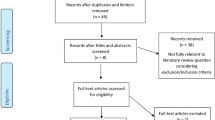Abstract
The 2010 Centers for Disease Control and Prevention (CDC) update on perinatal group B streptococcal (GBS) prevention advises universal vaginal–rectal GBS screening of pregnant women in the 35th through 37th week of gestation. Because GBS colonization is transient, a test performed more than 5 weeks before delivery may not have sufficient negative predictive value to be clinically useful. Our objective was to increase rates of quality-improved, CDC-adherent GBS screening and decrease repeat screening. A reminder for maternal vaginal–rectal GBS testing was added to the physicians’ electronic ordering screen, and family medicine physicians and residents were educated about screening guidelines through standardized, in-person presentations. Retrospective chart review was performed before and after these interventions. Univariate or bivariate analysis was performed for demographic factors, timing of first screen, rates of CDC-adherent screening (the newly defined quality-improved screen and the usual screen), and rates of repeat and unnecessary screens. Multivariate analysis was performed with quality-improved and usual screening as dependent variables. Bivariate analysis showed that post-intervention rates of quality-improved screening increased from 30 to 62 % (P < .001), usual screening increased from 69 to 84 % (P = .005), and repeat GBS screening decreased from 20 to 8 % (P = .007). Multivariate analysis showed increased post-intervention odds of quality-improved screening [odds ratio (OR) 3.59; 95 % CI 2.07–6.34] and usual screening (OR 2.67; 95 % CI 1.40–5.25). Low-cost, reproducible quality improvement interventions (electronic order reminder, educational sessions) have the potential to increase guideline adherence for GBS screening in pregnant women and decrease repeat screening.
Similar content being viewed by others
Abbreviations
- CDC:
-
Centers for Disease Control and Prevention
- GBS:
-
group B streptococcal
- ICSI:
-
Institute for Clinical Systems Improvement
- V–R:
-
vaginal and rectal
References
Prevention of perinatal group B streptococcal disease: a public health perspective. Centers for disease control and prevention. MMWR Recommendations and reports, 1996 May 31;45(RR-7):1–24. Erratum in: MMWR Morb Mortal Wkly Rep 1996 9;45(31):679.
Schrag, S. J., Zywicki, S., Farley, M. M., Reingold, A. L., Harrison, L. H., Lefkowitz, L. B., et al. (2000). Group B streptococcal disease in the era of intrapartum antibiotic prophylaxis. New England Journal of Medicine, 342(1), 15–20.
Schrag S, Gorwitz R, Fultz-Butts K, Schuchat A. (2002). Prevention of perinatal group B streptococcal disease: revised guidelines from CDC. MMWR Recommendations and reports,. 16;51(RR-11):1–22.
Schrag, S. J., Zell, E. R., Lynfield, R., Roome, A., Arnold, K. E., Craig, A. S., et al. (2002). Active bacterial core surveillance team. A population-based comparison of strategies to prevent early-onset group B streptococcal disease in neonates. New England Journal of Medicine, 347(4), 233–239.
Phares, C. R., Lynfield, R., Farley, M. M., Mohle-Boetani, J., Harrison, L. H., Petit, S., et al. (2008). Active bacterial core surveillance/emerging infections program network. Epidemiology of invasive group B streptococcal disease in the United States, 1999–2005. JAMA, 299(17), 2056–2065.
Verani JR, McGee L, Schrag SJ. (2010) Division of Bacterial Diseases, National Center for Immunization and Respiratory Diseases, Centers for Disease Control and Prevention (CDC). Prevention of perinatal group B streptococcal disease: revised guidelines from CDC, 2010. Recommendations and reports19;59(RR-10):1–36.
Yancey, M. K., Schuchat, A., Brown, L. K., Ventura, V. L., & Markenson, G. R. (1996). The accuracy of late antenatal screening cultures in predicting genital group B streptococcal colonization at delivery. Obstetrics and Gynecology, 88(5), 811–815.
Institute for Clinical Systems Improvement. Health care guideline: routine prenatal care [Internet]. 14th edition, 2010 Jul [cited 2011 Jan 27]. Available from: http://www.icsi.org/prenatal_care_4/prenatal_care__routine__full_version__2.html.
Rodriguez, E., Raker, C. A., Paglia, M. J., & Anderson, B. L. (2010). Compliance with group B streptococcus testing prior to labor and delivery. American Journal of Perinatology, 27(6), 475–479.
Faro S, Brehm B, Smith F, Mouzoon M, Greisinger A, Wehmanen O, et al. (2010) Screening for group B streptococcus: A private hospital’s experience. Infectious diseases in obstetrics and gynecology 2010. Epub 23 2010 Jun.
Bryant, A. S., Cheng, Y. W., & Caughey, A. B. (2011). Equality in obstetrical care: racial/ethnic variation in group B streptococcus screening. Maternal Child Health Journal, 15(8), 1160–1165. Erratum in: Maternal and Child Health J. 2011 Nov; 15(8): 1435.
Cardenas, V., Davis, R. L., Hasselquist, M. B., Zavitkovsky, A., & Schuchat, A. (2002). Barriers to implementing the group B streptococcal prevention guidelines. Birth, 29(4), 285–290.
Glass, N. E., Schulkin, J., Chamany, S., Riley, L. E., Schuchat, A., & Schrag, S. (2005). Opportunities to reduce overuse of antibiotics for perinatal group B streptococcal disease prevention and management of preterm premature rupture of membranes. Infectious diseases in obstetrics and gynecology, 13(1), 5–10.
Kaambwa, B., Bryan, S., Gray, J., Milner, P., Daniels, J., Khan, K. S., et al. (2010). Cost-effectiveness of rapid tests and other existing strategies for screening and management of early-onset group B streptococcus during labour. BJOG, 117(13), 1616–1627.
Turrentine MA, Ramirez MM, Mastrobattista JM. (2009) Cost-effectiveness of universal prophylaxis in pregnancy with prior group B streptococci colonization. Infectious diseases in obstetrics and gynecology, ;2009:934698. Epub 2009 Dec 13.
Grol, R. (2001). Successes and failures in the implementation of evidence-based guidelines for clinical practice. MedernalCare, 39(8 Suppl 2), II46–II54.
Acknowledgments
We appreciate and acknowledge the contributions of study team members Kyle J. Kircher, MD, MBA, Department of Family Medicine, Ms. Julie A. Maxson, Department of Family Medicine, and Ms. Vicki M. Clark, Practice-Based Research Network.
Conflict of interest
None
Author information
Authors and Affiliations
Corresponding author
Rights and permissions
About this article
Cite this article
MacLaughlin, K.L., Garrison, G.M., Matthews, M.R. et al. Increased Adherence to Prenatal Group B Streptococcal Screening Guidelines Through a Paired Electronic Reminder and Education Intervention. Matern Child Health J 18, 16–21 (2014). https://doi.org/10.1007/s10995-013-1228-7
Published:
Issue Date:
DOI: https://doi.org/10.1007/s10995-013-1228-7



